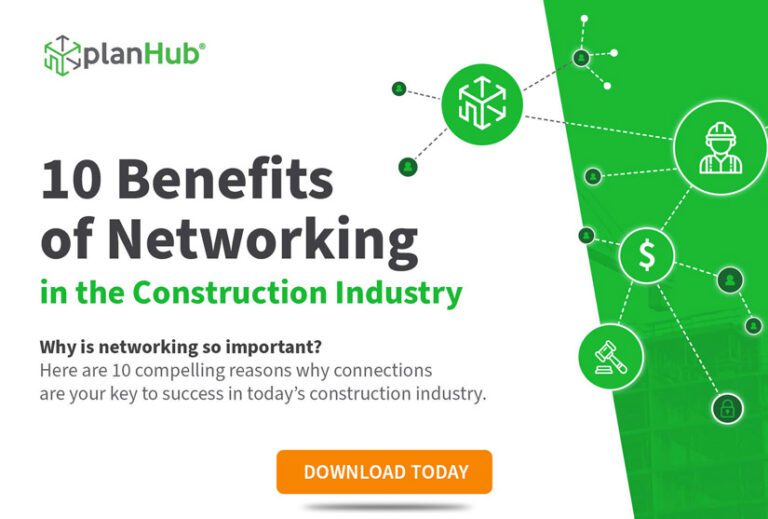In the construction industry, project teams have to make hundreds of decisions a day.
The basis for these decisions is often past experience, knowledge, and a bit of gut instinct. While this can
lead to
making good decisions, it can also lead to bad ones. That’s where data driven
decision-making comes into play.
Data driven decision-making (DDDM) involves making decisions based on data, rather
than
instinct
or biases (even hidden ones). The construction industry as a whole has been collecting data for years,
so there’s no shortage there. The problem is that this data is often siloed in different software programs and
systems, so there’s no way to aggregate it and share it collectively with the team. The rise of ERP and
all-in-one
software systems has helped to alleviate these silos, making it easier for teams to share information.
We’re going to take a brief look at the steps in the DDDM process and some of the
advantages for construction companies that use this process on a regular basis.
Traditional Decision-Making
In the era before the digital transformation in construction, traditional
decision-making in the industry was often guided by less reliable methods, making it challenging to pivot with
up-to-date resources and gather a
complete picture for sound decision-making. Data were available, but not in a form that was easily accessible or
allowed for deep discovery of actionable insights. This traditional approach to decision-making heavily relied
on
gut instincts, intuition, and the experience of business owners or key decision-makers, depending on personal
opinion or limited information.
While there is still a place for these types of decisions, especially in scenarios
where
supporting data, time, or
resources for analysis are not available, they are inherently risky. Decisions based solely or largely on
traditional
methods are prone to subjective judgment, personal biases, and limited information, which can lead to various
risks
including undesired outcomes, suboptimal choices, and missed opportunities.
The lack of structured data analysis and evaluation approaches in traditional
decision-making can result in limited accountability, inconsistent decision-making, and an overall lack of
transparency. This can lead to the dismal feeling of poorly selected projects, as one might ask, “Why did I ever
select that project?”
In contrast, the modern construction industry is increasingly recognizing the value
of
data-driven decision-making, which offers a more systematic, objective, and evidence-based approach. This shift
highlights the importance of adopting new technologies and methodologies to enhance the decision-making process
in
construction, ensuring better outcomes and improved performance.
What is data driven decision management?
A system based on data driven decision management values decisions made based on
verifiable data. Data driven decision-making tools include software to compile the data and dashboards to
display it
and help team members interpret it. Switching to a model where data drives decisions is often undertaken
to gain a competitive advantage, as it often leads to more efficient processes.
Driving the Right Decision at the Right Time
“Driving the Right Decision at the Right Time” in the context of preconstruction
decision-making emphasizes the crucial role of timely and accurate decision-making in the construction industry.
The evolution of digital data and technologies has created a vast universe of project data, which, when
effectively analyzed, can significantly enhance decision-making processes. This approach is particularly
beneficial in an industry characterized by profit and time pressures, skilled-labor shortages, material price
volatility, and shifting project trends.
The key to successful data-driven decision-making lies in its ability to improve the
chances of making the right decision at the right time. This involves analyzing large and complex data sets to
uncover hidden patterns, relationships, and other valuable information. By doing so, construction professionals
can make informed decisions that are not only based on objective data but also aligned with the latest industry
trends and project requirements.
Data-driven decision-making transcends traditional methods that relied heavily on gut
instincts and personal experience. Instead, it offers a systematic, objective, and evidence-based approach,
leading to more effective outcomes, improved business performance, and better decision quality. This modern
approach ensures that decisions are made with a comprehensive understanding of the project data, reducing the
risks associated with incomplete or inaccurate information and enhancing the overall efficiency and success of
construction projects.
What are the four steps of data driven decision-making?
- Define goals. Before you start
mining through your data, you need to develop business goals that you want to achieve. Usually these are
related to key performance indicators (KPIs)
that will improve the efficiency and profitability of your company. - Collect and analyze data. You’ll
need to develop metrics to help you measure your performance. These are often based on the KPIs you
identified in step one. You can use these metrics to find out how your company compares to others of similar
size and to industry standards. - Take action. Based on the
information you gained during the analysis, you can take specific steps
to help you meet your business goals. This may include refining processes or changing the way you manage
your crews. - Review results. Once you start
making improvements, you must continually monitor your performance. This will help you spot trends and
identify future goals.
What is an example of data driven decision-making in construction?
A good example of DDDM in the construction industry is the use of building information modeling (BIM)
in preconstruction planning. Teams use the software to model the building and analyze the sequence and timing of the
work. This allows teams to discover clashes, coordination issues, and missing information without putting a shovel
in the ground. At this stage, changes to the design are much less expensive than they are once construction has
begun.
Five advantages of data driven decision-making
There are many benefits of data driven decision-making for construction
companies.
- Your team can better understand the
basis for decisions and the transparency shows that they aren’t made arbitrarily. - You set and achieve your business
goals. - The team is always looking for new
efficiencies and your processes are always improving. - There’s a sense of ownership in the
decision-making process. - DDDM is proactive, so you can get ahead
of potential issues and can even prevent them.
Construction teams that use this process are already seeing improvement in their
efficiency and profitability. With modern technology and improvements in software, these tools are now available
to smaller firms who want to grow and improve their performance.
About PlanHub:
PlanHub is a leading provider of comprehensive bid management solutions for the construction industry. Our platform simplifies and streamlines the bidding process, connecting subcontractors and general contractors to facilitate collaboration and drive project success. With a commitment
to innovation and empowering our users, we continue to revolutionize the construction industry with cutting-edge features and a user-friendly experience.


